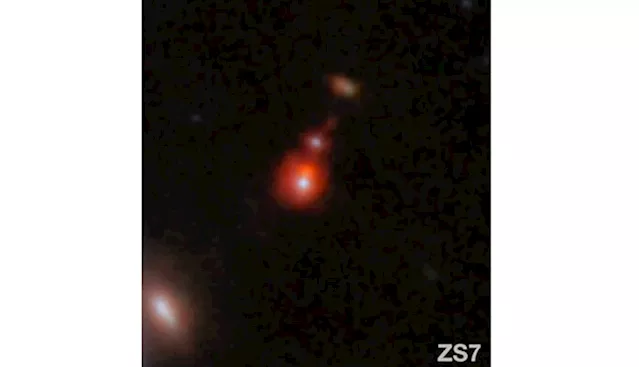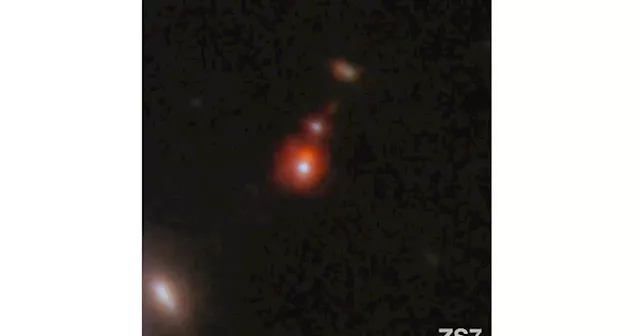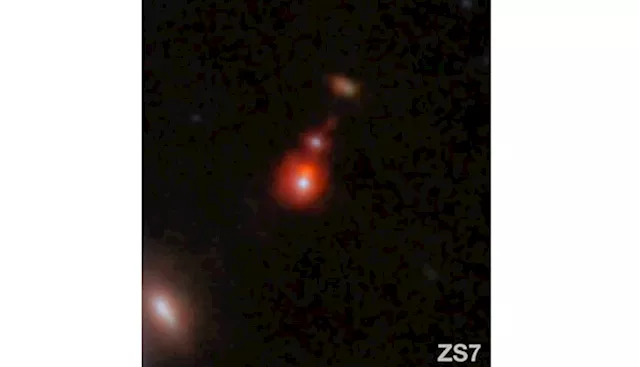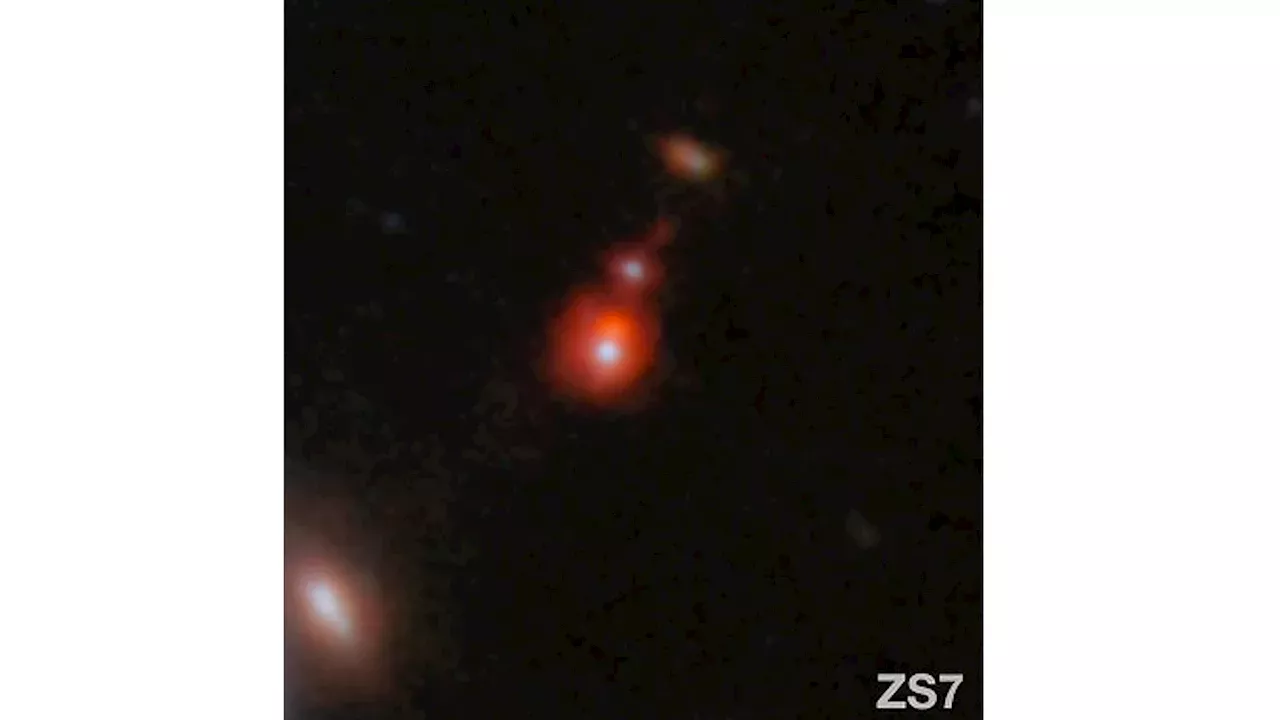This image released by NASA shows the ZS7 galaxy system, revealing the ionized hydrogen emission in orange and the doubly ionized oxygen emission in dark red. .
These two gigantic black holes and their galaxies consolidated just 740 million years after the universe-forming Big Bang. It's the most distant detection ever made of merging black holes, scientists reported Thursday. One black hole is 50 million times more massive than our sun. The other is thought to be similar in size, but is buried in dense gas, which makes it harder to measure.The latest findings, published in the Monthly Notices of the Royal Astronomical Society, suggest mergers are how black holes can grow so rapidly — “even at cosmic dawn,” said lead author Hannah Ubler of the University of Cambridge.
"Massive black holes have been shaping the evolution of galaxies from the very beginning," Ubler said in a statement. Launched in 2021 as the eventual successor to NASA's Hubble Space Telescope, Webb is the biggest and most powerful observatory ever sent into space. A joint U.S.-European project, the infrared observatory surveys the universe from a location 1 million miles from Earth.The Associated Press Health and Science Department receives support from the Howard Hughes Medical Institute’s Science and Educational Media Group. The AP is solely responsible for all content.
Belgique Dernières Nouvelles, Belgique Actualités
Similar News:Vous pouvez également lire des articles d'actualité similaires à celui-ci que nous avons collectés auprès d'autres sources d'information.
 Webb telescope uncovers merger of two massive black holes from early universeThe Webb Space Telescope has discovered the earliest known merger of black holes.
Webb telescope uncovers merger of two massive black holes from early universeThe Webb Space Telescope has discovered the earliest known merger of black holes.
Lire la suite »
 Webb telescope uncovers merger of two massive black holes from early universeThe Webb Space Telescope has discovered the earliest known merger of black holes
Webb telescope uncovers merger of two massive black holes from early universeThe Webb Space Telescope has discovered the earliest known merger of black holes
Lire la suite »
 Webb telescope uncovers merger of two massive black holes from early universeThe Webb Space Telescope has discovered the earliest known merger of black holes.
Webb telescope uncovers merger of two massive black holes from early universeThe Webb Space Telescope has discovered the earliest known merger of black holes.
Lire la suite »
